How to stop a cat from pooping in your yard
Desperate to learn how to stop a cat from pooping in your yard? We reveal what this behavior means and how to prevent it…
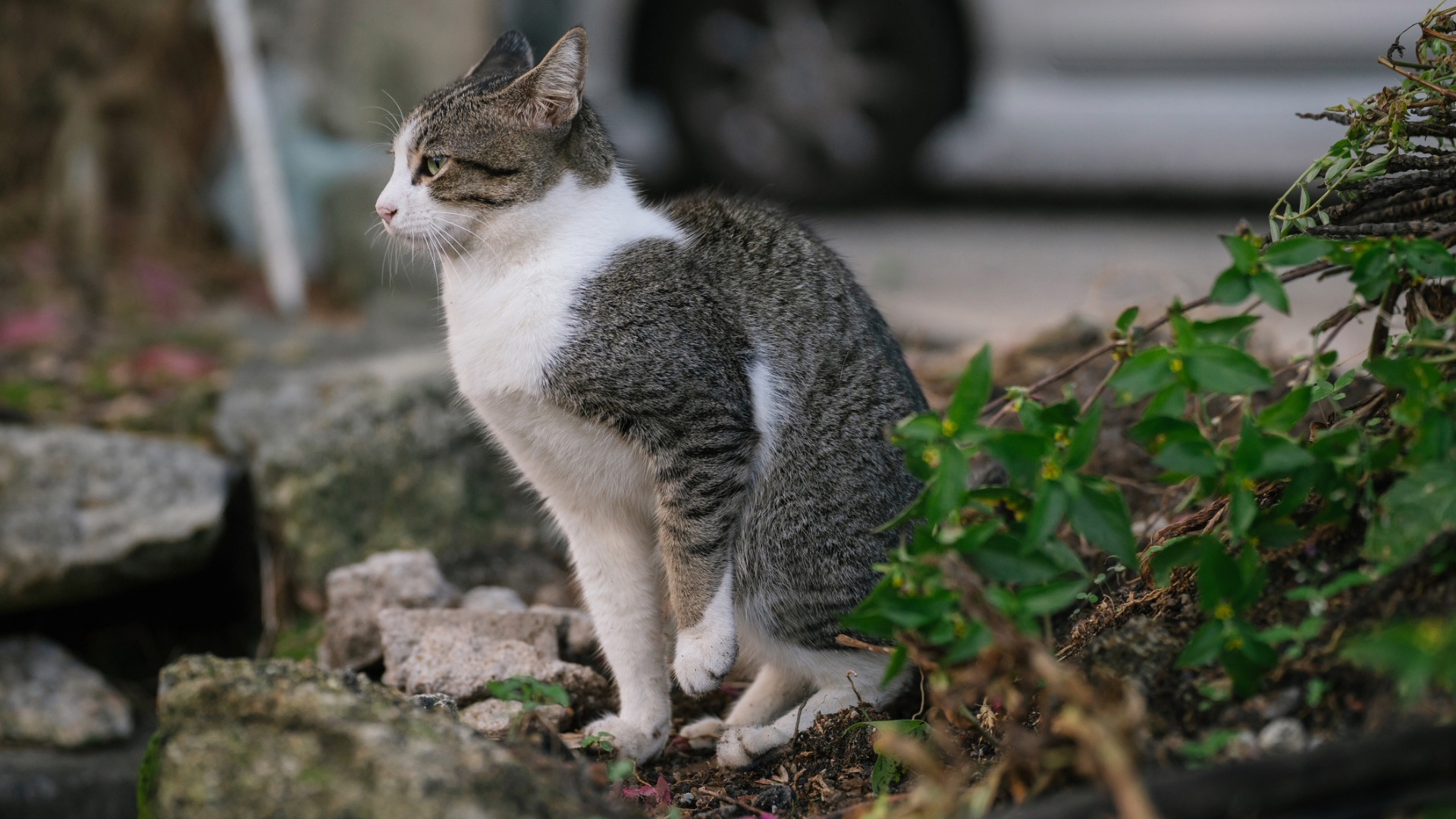
Are you wondering how to stop a cat from pooping in your yard? You’re not alone - dealing with cats defecating in the yard or garden can be a frustrating and persistent problem for many people.
There’s nothing worse than realizing you’ve trodden in a stinky pile of poop, discovering that toileting cats have trampled your beautiful flower borders, or going to pull up some homegrown carrots and finding excrement buried in your vegetable bed!
Whether the culprits are neighborhood cats, strays or your own feline companions, the sight and smell of cat feces in your yard can be unpleasant and unhygienic.
Whilst installing one of the best microchip cat flaps is an easy fix to prevent unwanted feline visitors from entering and toileting inside your home, stopping cats from pooping in your yard can be more of a challenge.
I have eighteen years of experience working with cats in vet clinics, shelters, and rescue and welfare organizations. I hold an International Cat Care Certificate in Advanced Feline Behavior for Cat Professionals and have completed a Postgraduate Diploma in Clinical Animal Behavior. Living in a neighborhood with many free-roaming felines and sharing my home with five cats, I'm no stranger to the problem of finding poop in my garden.
Read on as I share what it means if a cat is pooping in your yard and discover the practical and humane solutions that will discourage them from using your outdoor space as a giant litter box.
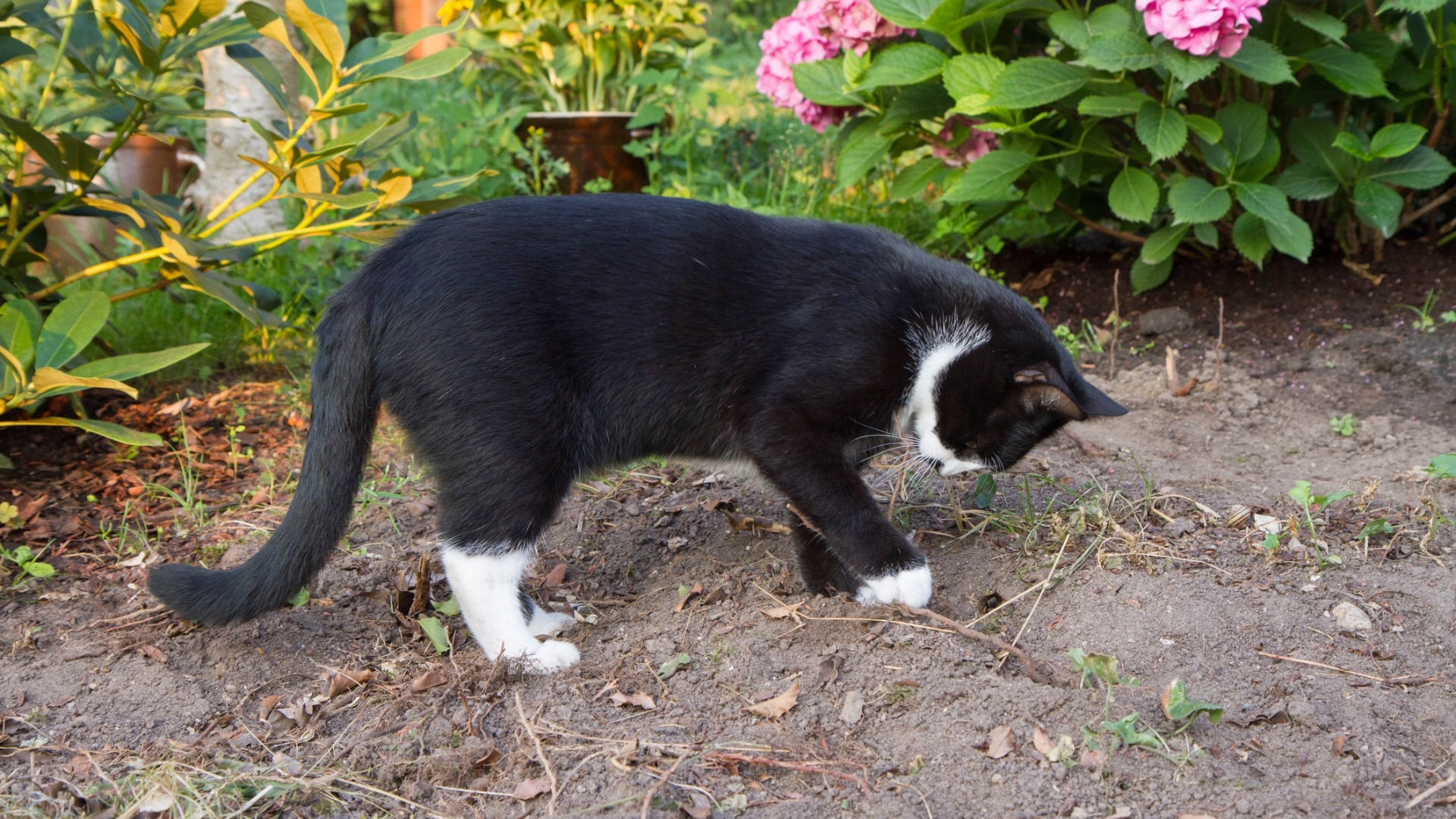
How to stop a cat from pooping in your yard
Are you desperate to stop a cat from pooping in your yard? Don’t despair, there are effective strategies you can employ to discourage this undesirable behavior and reclaim your outdoor space:
PetsRadar Newsletter
Get the best advice, tips and top tech for your beloved Pets
1. Use strong natural scents as a deterrent:
Cats have a sensitive sense of smell and often avoid potent aromas, so strong, cat-safe, non-toxic scents can be a natural deterrent. You could place chopped banana peel and chicken manure pellets on your flower beds to keep cat poop at bay.
Alternatively, it’s possible to purchase pellets containing essence of lion manure, which can be scattered over beds, borders, and pots. The scent of an apex predator is said to deter domestic cats from digging and pooping in the same area, and the pellets have the added benefit of fertilizing your plants. If you’re trying to deter a neighborhood or stray cat from pooping in your yard, try placing some of your own kitty’s poop around the perimeter, as the intruder may avoid the area if it smells of another cat.
2. Grow plants that cats dislike
Cats naturally avoid some plants because they have prickly leaves or an unpleasant scent. Try planting scaredy cat plant (coleus canina), curry plant, rosemary, lemon balm, or shrub roses.
3. Optimize their indoor litter box set-up
You can encourage your kitty to poop inside by providing them with the best self-cleaning cat litter box. A minimum of one litter box per cat plus one extra is recommended, as many cats prefer to pee in one box and poop in another.
Ensure that litter boxes are big enough - at least one and a half times the length of your cat, so they have plenty of room to turn around. Position them in easy-to-access, quiet, low-traffic areas away from food, water and sleeping areas. Avoid plastic liners and scented litter, as most kitties find these aversive. Scoop regularly and clean the boxes out completely at least once a week to keep them fresh.
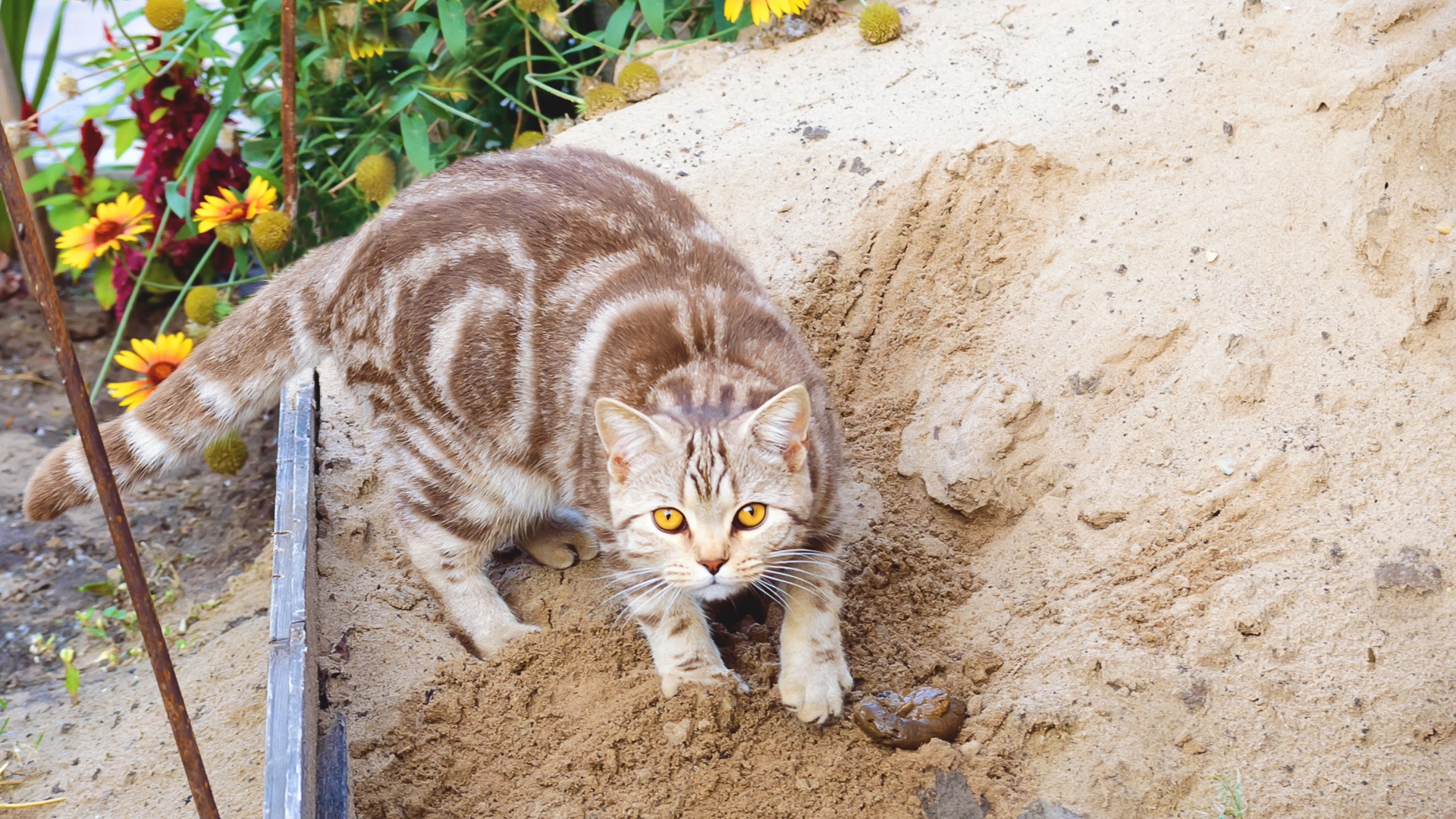
4. Get an outdoor litter box
If you don’t mind your own kitty or visiting cats pooping in your yard but would like to prevent them from destroying your seedling and digging up your prized plants, why not provide a more suitable place for them to do their business.
Purchase a rainproof outdoor litter box or create a permanent latrine by digging an area the size of an XL litter box or larger and filling it with fine soil or play sand. Locate it in an area where they’ll have privacy but a clear view of their surroundings to prevent them from being ambushed by other cats, dogs, or wild animals. Scoop regularly to maintain hygiene and be aware that if the ground freezes in winter, you may need to provide an alternative toileting area.
5. Make beds, borders and pots less appealing
You can make your vegetable beds, flower borders, and pots more difficult to access and less appealing to use as a toilet by planting crops and shrubs close together or growing ground-covering plants. Use branches, twigs, bark, stones, or crushed eggshells to cover bare soil, as they’re uncomfortable to walk across and difficult to dig in. Protect seedlings and precious plants with a cloche or mesh barrier. Cats generally avoid digging in wet soil or grass, so keep your plants well-watered and run a sprinkler on your lawn.
What does it mean if a cat poops in your yard?
Pooping outside is a natural behavior for cats but there are several reasons why a cat may choose to poop in your yard.
1. Territorial behavior
Cats are territorial and sometimes use their feces to mark their territory by pooping in an open area and leaving it uncovered, which is known as ‘middening’. The scent and visual marker signals to other cats that this is their domain.
This behavior is particularly prevalent in outdoor cats that have defined territories they patrol and mark regularly. You may also notice urine spraying in your yard, which serves a similar purpose. Check out our feature explaining ‘what does a cat spraying look like?’
Even if your feline companion has access to a catio or enclosed yard they may midden if they feel threatened by intruder cats approaching the catio or sitting on the fence.
2. Substrate preference
Domestic cats evolved from the desert-dwelling African wildcat. They retain their wild ancestor’s preference for eliminating in a soft, sandy substrate because it’s easier for them to dig in and cover their feces, which helps to reduce the scent and protect them from potential predators. For this reason, yards with flower or vegetable beds, freshly tilled soil, or sandboxes are particularly attractive to kitties searching for a place to poop.
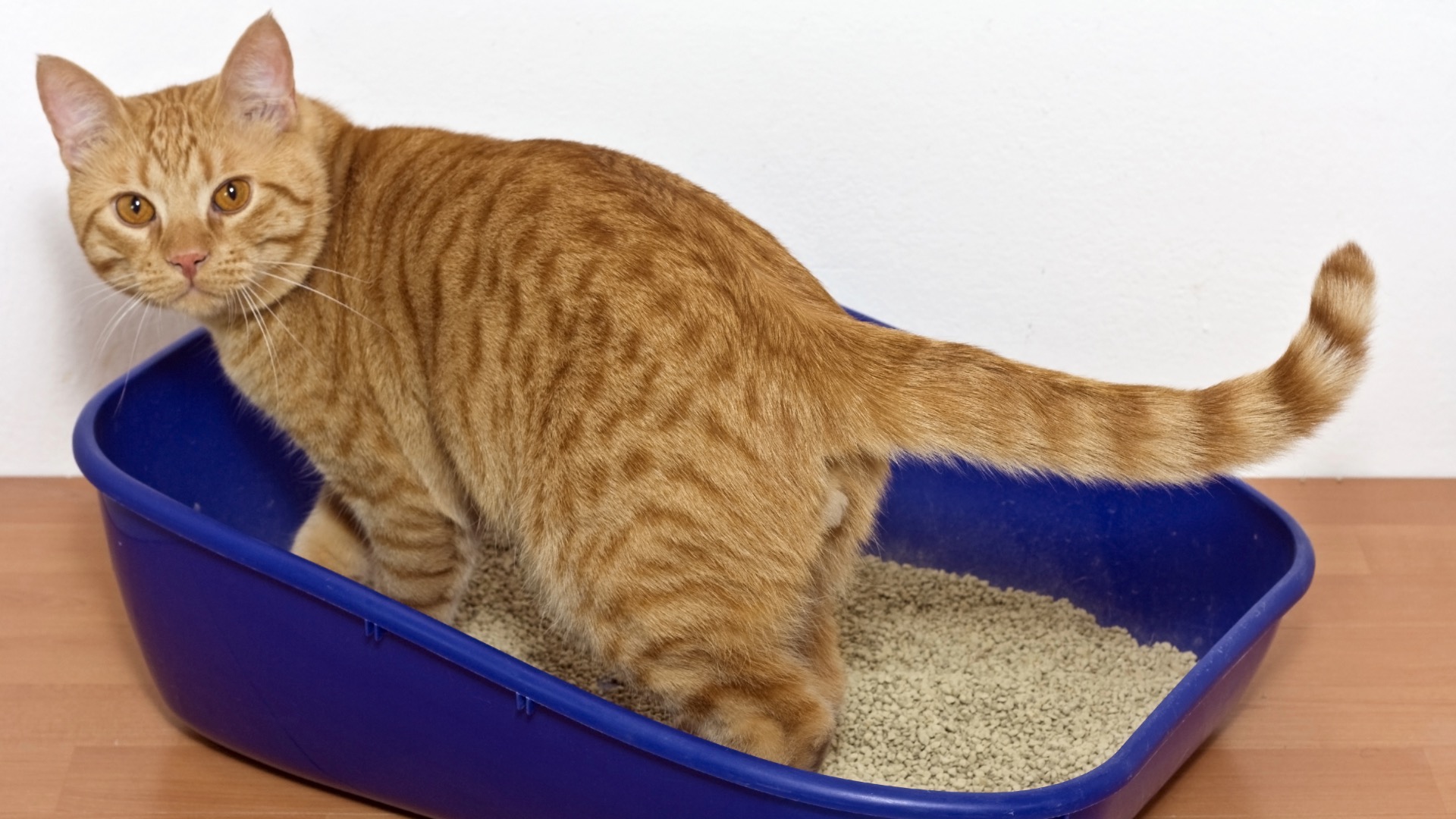
3. They’re unhappy with their litter box
If your feline companion has indoor litter boxes but still chooses to poop outside, it may be that they’re unhappy with the type of litter or the position, style or set-up of the boxes. Loose soil, soft compost and sand are comfortable underfoot, while wood pellet litter can be painful to stand or squat on, particularly for elderly cats or kitties suffering from osteoarthritis. Most cats prefer a soft, fine-textured, unscented clumping litter.
4. They’re anxious or unwell
If your kitty suddenly starts pooping in the yard when they usually use an indoor litter box it may be a sign of anxiety in cats or that they're unwell.
Stressors, such as the arrival of a new cat or dog, the presence of unfamiliar visitors, or construction noise can cause anxiety and make a cat feel too insecure to use their litter box.
If your feline friend is experiencing pain due to illness, for example, constipation, they may associate this with their litter box and avoid it, seeking an alternative place to toilet.
Can cat feces contaminate a garden?
Like all feces, cat poop can act as a fertilizer for plants. However, excess nutrients can be harmful and may threaten native species which have adapted to particular soil conditions.
Cats can shed gastrointestinal parasites in their feces, including roundworms, tapeworms, hookworms, whipworms, heartworms, and single-celled organisms including Giardia and Toxoplasma gondii. Other cats, dogs, and wildlife are at risk of contracting these parasites if they come into contact with infected cat poop or contaminated soil, food or water.
Humans can also be infected, experiencing health problems from minor discomfort to serious illness, with pregnant women, babies, young children and immunocompromised people at particular risk. So, it’s important to wear gloves when gardening, cover children’s sandboxes, and always wash your hands after working or playing in the yard.
Cat feces can also enter the waterways through runoff from rainfall, driving algal blooms and threatening marine wildlife. Toxoplasma gondii is an infection caused by a parasite found in cats' intestinal tracts. A study published in the Acta Parasitologica journal revealed that it's been shown to affect sea otters, seals, sea lions, whales, dolphins, and porpoises, causing severe illness and increased susceptibility to other diseases, often resulting in death.
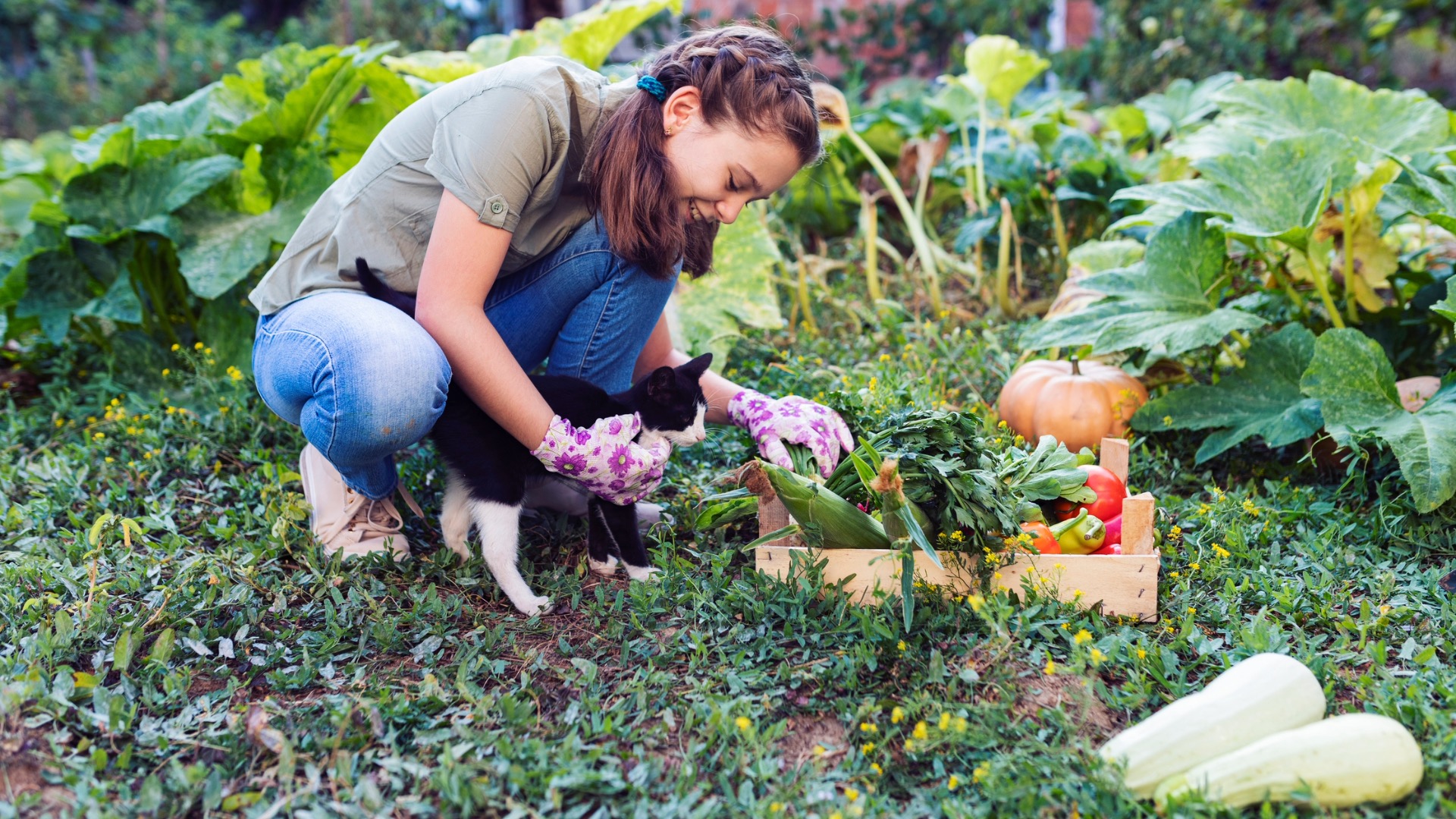
How long does cat poop take to decompose in soil?
Cat poop typically takes between three and six months to decompose in the soil but can linger for up to a year, depending on environmental conditions including temperature, moisture, and microbial activity.
So, it’s essential to promptly clean up and safely dispose of feces to maintain a healthy and pleasant environment for humans, cats and other animals. Bag it, seal it, and put it in the trash, use a professional pet waste disposal service, or compost it in a dedicated composting system sited well away from edible plants.
Is your kitty nibbling your favorite flowers or chewing your houseplant leaves to sheds? We reveal how to stop a cat from eating plants. When it comes to your furry friend’s feces do you know what’s normal? We reveal what to look out for when you scoop cat poop.
Claire Stares is a freelance writer and book author. She holds a BA (Hons) in English and a MA in Creative Writing and is currently enrolled on the MSc Clinical Animal Behavior program at the University of Edinburgh. Claire has a particular interest in feline behavior, welfare, and training, and holds an International Cat Care Certificate in Advanced Feline Behavior for Cat Professionals and a Diploma in Feline Health and Welfare. She has completed the ILLIS Animal Behaviour Courses Advanced Animal Training course and the Karen Pryor Academy Train Your Cat course.
She shares her home with five cats and volunteers for a cat welfare charity, so she's passionate about exploring how cat guardians can use positive reinforcement training and environmental enrichment to facilitate cooperative care, prevent problem behaviors, improve cats’ quality of life, and strengthen the cat-human bond.

